In parts one and two, we examined what James Churchward wrote about the Cosmogonic/Cosmic Diagrams in his books.
The fact that James never mentions the Naacal Tablets or Niven’s tablets with regard to the Cosmogonic/Cosmic diagram perhaps indicates that those treasure troves of information were not the source of the ancient wisdom concerning Cosmic diagrams.
Individuals that are familiar with my book, Lifting the Veil on the Lost Continent of Mu Motherland of Men may remember the footnote attached to the illustration, “The First Book Ever Written – The Cosmic Diagram of the Land of Mu. Over 35,000 years old” as it is called in the Lost Continent of Mu Motherland of Men page 141 and subsequently referred to as the ‘Cosmic or Cosmogonic Diagram.’
Same as Plate XVII on page 17 of Queen Moo & the Egyptian Sphinx; LePlongeon, Augustus; 1896; Same as drawing on page 25 of Signs and Symbols of Primordial Man, being an explanation of the Evolution of Religious Doctrines from the Eschatology of the Ancient Egyptians; Albert Churchward, 1910. Captioned: “from Mexico”.
The same illustration is presented in earlier published works with individuals that James knew quite well. From the unpublished ‘My Friend Churchey And His Sunken Island of Mu’ by Percy Tate Griffith, the author reveals that both Alice and Augustus Le Plongeon, as well as James Churchward and other NYC Theosophists would gather for tea and discussions on Sunday afternoons in the late 1880s. Albert Churchward was a respected author on Freemasonry, successful surgeon, and James’ younger brother.
First, from Le Plongeon and Queen Moo & the Egyptian Sphinx
from pages 14-16:
ON examining the adornments of the atlantes that supported the altar, we could not help exclaiming, “Why, this is Burmah!” And so it is. But it is also America. Yes, ancient America. brought back to light after slumbering many ages in the lap of Time, to show the people of the nineteenth century that, long, long ago, intimate communications existed between the inhabitants of the Western Continent and those of Asia, Africa, and Europe, just as they exist to—day; and that ancient American civilization, if not the mother of that of historical nations of antiquity, was at least an important factor in the framing of their cosmogonic notions and primitive traditions.
Of that fact no better proof can be obtained than by comparing the symbols of the universe found among the Mayas, the Hindoos, the Chaldees, and the Egyptians.
The simplest is that of the Mayas. It seems to have served as model for the others, that evidently are amplifications of it. We find it many times repeated, adorning the central fillet of the upper cornice of the entablatures of the eastern and western facades of King Can’s palace at Uxmal. This edifice was also the residence of the pontiff.
A knowledge of antique geometric symbology makes it easy to understand these cosmic diagrams. In the centre of the figure we see a circle inscribed within the hexagon formed by the sides of two interlaced equilateral triangles.
The Egyptians held the equilateral triangle as the symbol of nature, beautiful and fruitful. In their hieroglyphs it meant “worship.” For the Christians the equilateral triangle, containing the open eye of Siva, is the symbol of Deity. The Hindoos and the Chaldees regarded it as emblem of the spirit of the universe. Exoterically this central circle represents the sun, the light and life—giver of the physical world, evolved from fire and water.
It is well known that among the ancient occultists, of all nations, the triangle with the apex upward symbolized “fire;” that with the apex downward, “water.” The outer circle that circumscribes the triangles is the horizon, that apparent boundary of the material world, Within which, in his daily travels, the sun seems to be tied up. Hence the name Inti-huatama, “sun’s halter,” given by the ancient Peruvians to the stone circles so profusely scattered over the high plateaus of the Andes, along the shores of Lake Titicaca, in India, Arabia, northern Africa, northern Europe, where they are known as druidical circles. Their use is still a matter of discussion for European antiquaries. They disdain to seek in America for the explanation of the motives that prompted their erection and that of many other constructions, as well as the origin of customs and traditions that continue to be among them the themes for useless controversies.
The twelve scallops which surround the outer circle are the twelve houses or resting—places of the sun; that is, the twelve months of the solar year, or twelve signs of the zodiac. As to the four double rays, those nearest to the houses of the sun typify the primordial Four, direct emanations from the central sun—-the four Heavenly Giants who helped in fashioning the material universe. The lower ones symbolize the four primordial substances known to modern scientists as nitrogen, oxygen, hydrogen, and carbon, Whose various combinations form the four primitive elements – fire, water, air, and earth – into which these can again be resolved.
In the Appendix the esoteric explanation of the diagram is presented as it was given by the Maya sages to their pupils in the secrecy of the mysterious recesses of their temples. It corresponds precisely to the doctrine of the cosmic evolution contained in that ancient Sanscrit book of “Dzyan,” which forms the groundwork of Madame H. P. Blavatsky’s “The Secret Doctrine.”
It is quite unfortunate that the Appendix is without the esoteric explanation, however you could check out the “ancient Sanscrit book of Dyzan” since it corresponds precisely, however it does not appear to line up with what James wrote in his books.
In subsequent pages, Le Plongeon also shows other Cosmic Diagrams, here are comparisons against those that James provided in the Sacred Symbols of Mu.
There wasn’t a Babylonian Cosmogonic Diagram in Queen Moo and the Egyptian Sphinx.
Next time, we’ll look at the references by Dr. Albert Churchward…

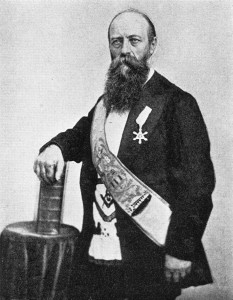
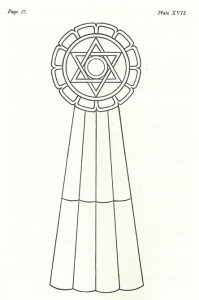
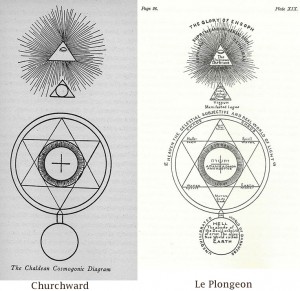
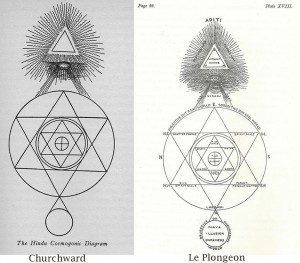


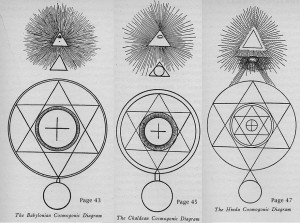
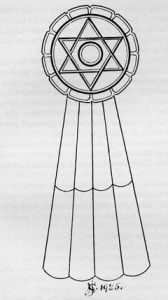


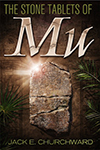
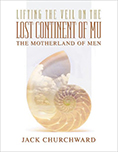



 RSS - Posts
RSS - Posts